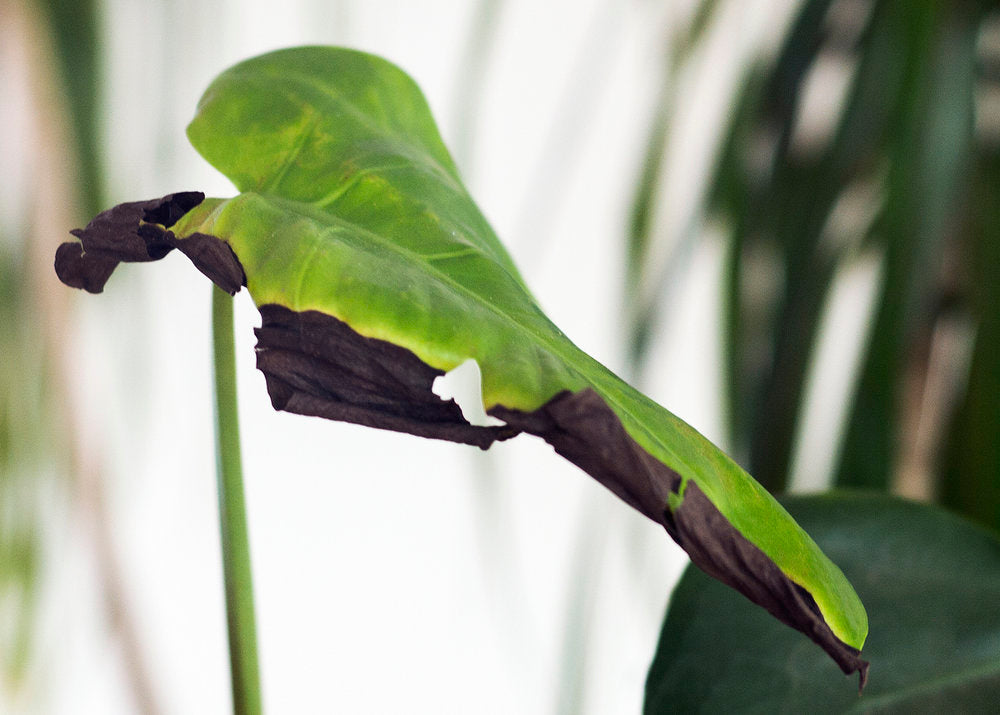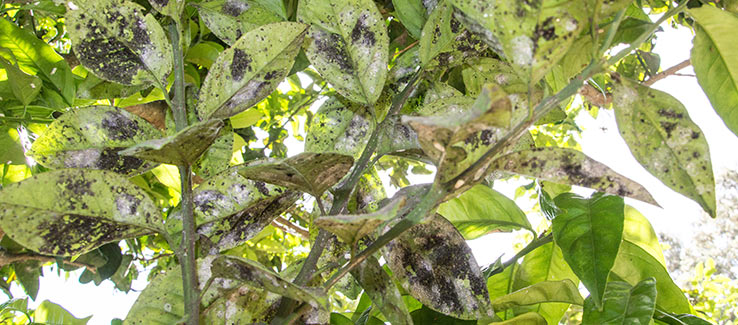
Due to root rot brought on by wet soil surrounding the roots, excessive watering, or high humidity, snake plants turn black. For snake plants to avoid root rot, which turns the leaves black, they need well-draining soil and containers with drainage holes.
Keep reading to learn how to put the finest maintenance methods into practice to stop this from happening and how to resuscitate your snake plant if its leaves have turned black.
Table of Contents
Over Watering Causes Snake Plants to Turn Black
Overwatering is the most frequent reason for snake plants turning black.
Native to Africa, snake plants thrive in semi-arid environments with little rainfall.
You are overwatering your snake plant if you give it more frequent waterings than once per week.
This is especially true in the Winter, when snake plants naturally stop growing and lie dormant for a period of time. As a result, their need for moisture decreases, necessitating monthly watering (with a good soak to promote healthy roots) in order to prevent root rot.
(Read my post for the causes and solutions if your snake plant isn’t growing.)
Frequent watering creates the ideal environment for the fungus that causes root rot, which turns the leaves of snake plants black.
As the first sign of overwatering, snake plants frequently droop and turn yellow. Black leaves are a sign of root rot.
How can you save it?
Restrict the irrigation. Snake plants should be watered in a cycle that involves soaking the soil and then letting it totally dry since this mimics the circumstances found in their natural habitat.
The simplest approach to determine the proper watering frequency for your climate is to feel the soil at the bottom through the drainage hole in the base to determine whether the soil is dry or moist. Snake plants typically want to be watered once every two weeks.
(To learn how frequently to water snake plants in the winter, read my post.)
If the soil is dry, this is the ideal time to water; if it is still wet, wait until it dries completely before watering.
It can be quite challenging to revive a snake plant after rot has taken hold.
Since the black rot spreads and eventually kills the plant if left untreated, the best course of action is to trim back any parts of black from your snake plant and leave only healthy tissue.
The plant has a chance to grow again once the black-infected area has been removed and your watering habits have been changed.
It can be very difficult to revive a snake plant if a sizable portion of it has turned black, and it is possible that the plant will die back.
I advise taking cuttings for propagation if the plant has any viable tissue present.
Cutting-based snake plant propagation is fairly simple and successful most of the time. Watch the following video to learn how to quickly multiply your snake plant:
Slow Draining Soils

If you grow your snake plant in regular potting soil, the roots will probably hold too much moisture, which will color the leaves black.
It’s crucial to grow snake plants in soils that have the same well-draining qualities as the soil in their natural habitat.
When planted in properly formulated succulent and cactus soil, which is readily accessible at garden centers and on Amazon, snake plants thrive.
As a result, water penetrates effectively to reach the roots of snake plants in special succulent potting mixtures while draining away rapidly to prevent root rot.
Replace the soil with some succulent and cactus soil if your potting mix retains moisture for a long period after watering to protect the plant from further stress.
To stop any rot from spreading and to help the plant recover, it is crucial to completely remove any black parts of leaf even with the proper watering frequency and well-draining potting mix.
To propagate black snake plants, however, it could be required to take as many cuttings as you can from the green leaves that are still there.
Pots Without Drainage Holes in the Base Cause Water Stress
Because snake plants are grown in pots without drainage holes, water can collect around the roots, causing the leaves to turn black from water stress.
Repot your snake plant right away if it is in a container without drainage holes in order to save it.
Snake plant leaves not becoming black is not just caused by pots without drainage holes in the base.
- the usage of trays and saucers. If your pot has a saucer or tray underneath it to catch spills, you should regularly empty it to let excess water drain away rather than pool there, which would keep the soil moist and lead to root rot.
- Roots or compacted earth have filled the drainage hole. If you observe that the soil is draining slowly, it is worthwhile to check the pot’s base. Sometimes dense roots or compacted soil obstruct the drainage holes. With succulent and cactus soil, the potting soil is more likely to remain porous and well-draining and is less likely to be compacted.
- Snake plants with an ornamental outer pot are frequently offered for sale in the store as gifts. This container can keep extra water from draining, keeping the soil soggy, leading to water stress, and turning the leaves of your snake plant black.
It is crucial to plant your snake plant in the correct pot and make sure that extra water can drain after watering because snake plants need the soil to dry out between periods of watering in order to prevent rot and the leaves turning black.
The same rule applies to snake plants that are water stressed for any other reason. If necessary, take cuttings to propagate any black leaves that are present.
Humidity Slows Water Loss from Leaves and Causes Black Leaves

The main mechanism through which snake plants control their moisture levels is transpiration, or the loss of water from their leaves at a slower rate due to humidity.
High humidity can produce less transpiration, which can contribute to the water stress that makes snake plants turn black.
Increased humidity may result from a variety of factors in addition to the environment, including:
- misting or spraying water onto the foliage. Misting the foliage goes against the snake plant’s preference for dry weather. To avoid producing a humid microclimate, water snake plants from the base rather than from above.
- Household areas that are humid. Generally speaking, snake plants do not fare well in humid, steamy environments like the bathroom or kitchen. Choose a dryer room to place your snake plant.
- humid environments If at all feasible, try to place your snake plant in an area with some breezes because snake plants often struggle to develop in environments with high levels of humidity.
Lower humidity in the room where your snake plant is located will aid in the plant’s recovery from rot and guard against further injury to the leaves.
Read my article on how to save a dying snake plant for additional details.
Key Takeaways:
- When there is too much moisture around the roots due to overwatering, slow draining soils, or pots lacking drainage holes in the base, snake plants turn black as a result of root rot. Another factor that can cause the leaves to become black is high humidity.
- Reduce watering, add succulent and cactus soil to the area, and make sure the snake plant is in a pot with sufficient drainage.
- Keep the snake plant away from steamy bathrooms and kitchens and place it in a space with reduced humidity.
- To stop the rot from spreading, remove any black rot from your succulent and, if necessary, propagate from healthy cuttings.
